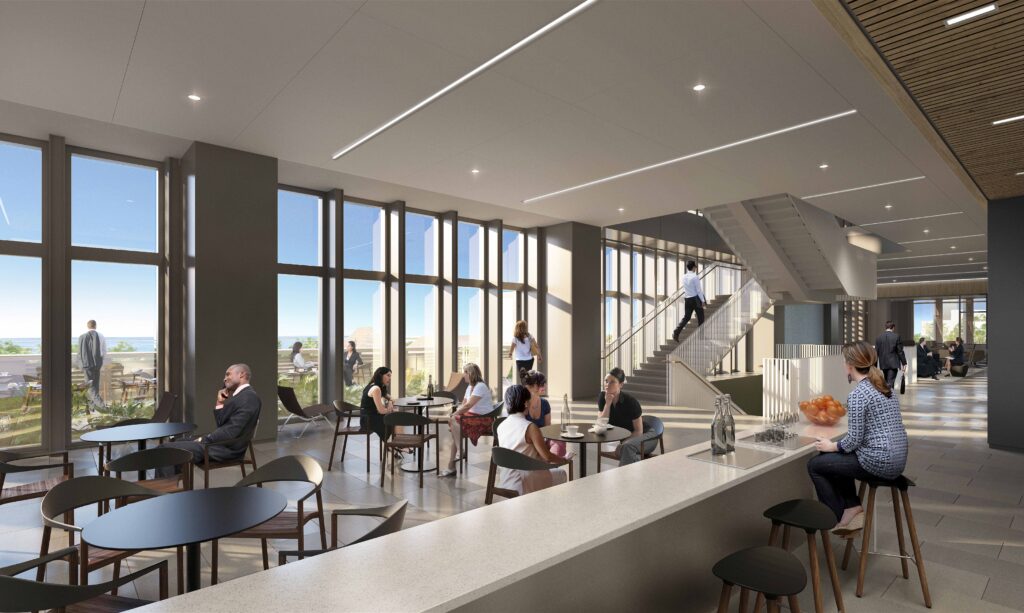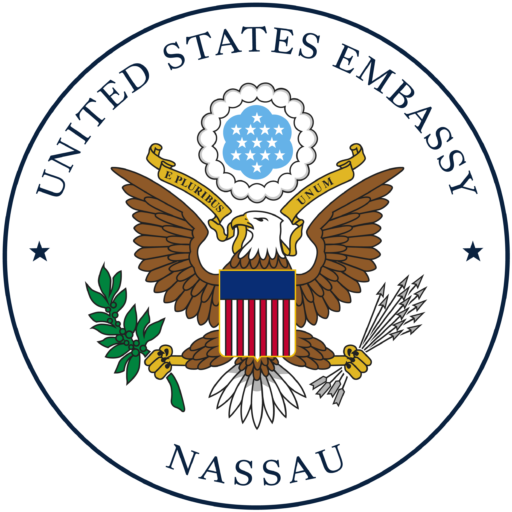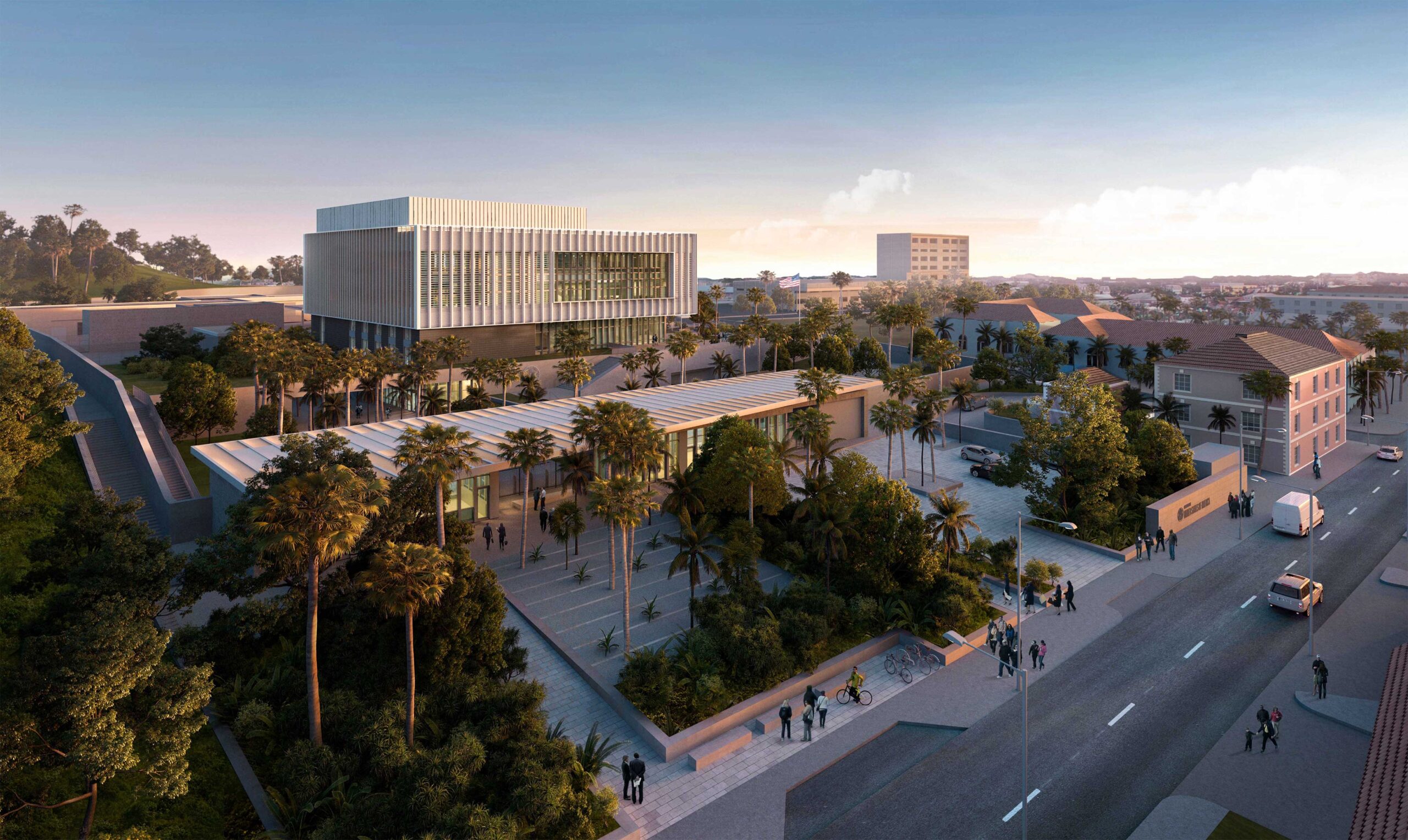
The new U.S. Embassy Nassau serves as a physical representation of the significant relationship between the United States, The Bahamas, and the Caribbean region. Nassau, the capital of The Bahamas, is known for its beaches, history, and culture. As the city grows into a hub for tourism and international business, its location and workforce offer opportunities for investment and economic growth. Located in downtown Nassau, the new U.S. embassy is situated amid key tourist and civic destinations. The project features a five-story office building with support amenities that will enhance and expand diplomacy in the Bahamas, making the United States safer, stronger, and more prosperous.
Project Overview
Ennead Architects
Design Architect
Integrus Architecture
Architect of Record
Caddell Construction
Design/Build Contractor
Design & Construction
The design focuses on providing a high-quality experience for staff and visitors while enhancing the integrity of the existing neighborhood. The embassy’s compact and simple form, with low-scale massing and integrated landscape features, creates an intimate feel, minimizing its overall height impact.
Inspired by local architectural traditions, the louvered porch offers the diplomatic community protection from the elements and harnesses trade winds for natural cooling. The spacing and arrangement of louvers and fins on the building’s exterior vary based on sunlight, views, privacy, and the building’s functions.
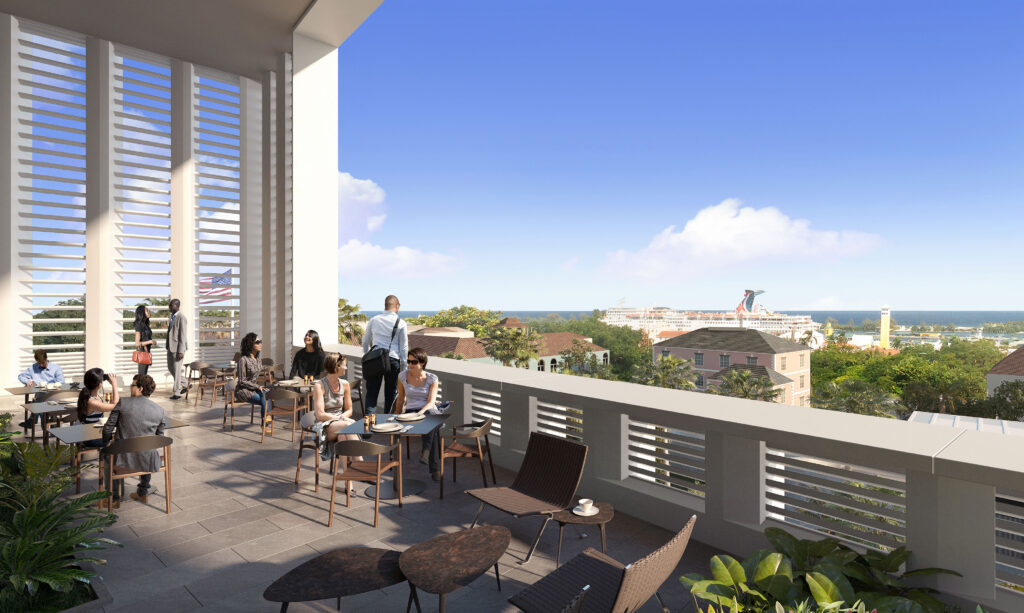
To ensure durability, white vertical fins made of ultra-high performance concrete (UHPC) are reinforced with fiberglass to prevent cracking. Additionally, marine-grade stainless steel is extensively utilized across the site to mitigate corrosion risks in the salty island setting.
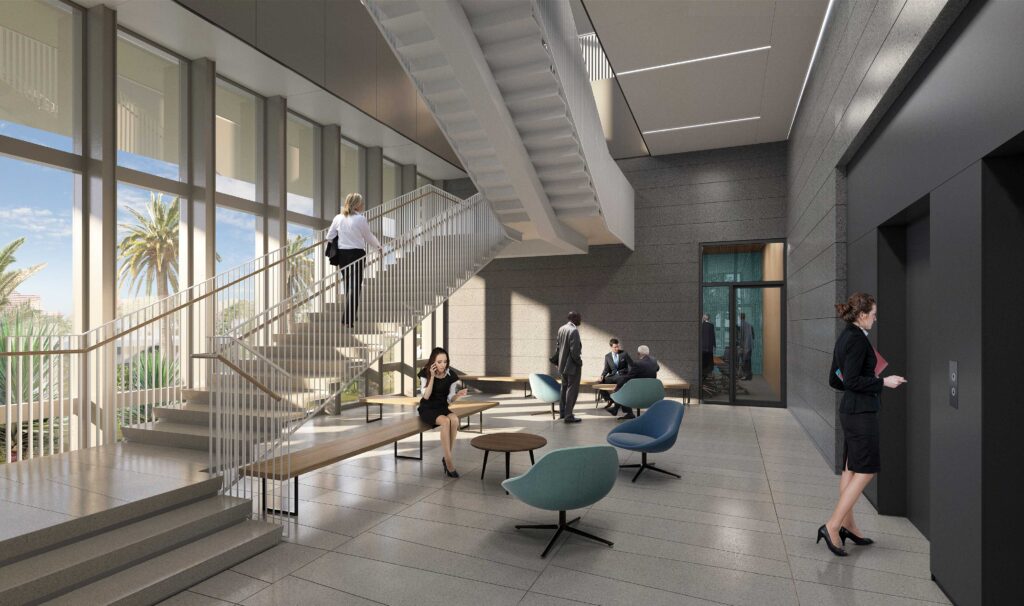

Building Performance
A model of building performance optimization, the resilient design reduces risk and operating costs associated with utilities and maintenance while enhancing natural hazards adaptation.
The new embassy includes a variety of energy-efficiency strategies including LED lighting, solar panels, and sun control and shading devices on the façade.
Other features include local flora plantings, low-water flush and flow fixtures and a wastewater treatment system that treats all wastewater on-site, meeting 100 percent of the irrigation demand.
Water management features collect rainwater in a large cistern for use by the cooling tower and allow excess water to seep back into the aquifer.
Arts & Cultural Heritage
The permanent art collection, curated by the Office of Art in Embassies, showcases works from both U.S. and Bahamian artists in a variety of media, including painting, photography, textile, and sculpture.
The on-site OBO team and the Office of Art in Embassies partnered with distinguished Bahamian artist and educator Antonius Roberts, O.B.E., to commission several unique sculptures that grace the Consular Garden and main stairwell of the new building.
Roberts crafted two of these sculptures from the wood of trees cleared from the new embassy site. One of these works, located outdoors, was carved from the twisted trunk of a tamarind tree that has been on the site for over 200 years. One large silk cottonwood tree from the same location was repurposed into canoe forms that are suspended (as if floating) above and alongside the central staircase of the embassy.
Another sculpture by Debora Moore is located in the light-filled, monochrome lobby entrance. This large contemporary glass work portrays a palm tree entwined with orchids, exploring the flora of the Bahamas and capturing its beauty and grandeur in glass form.
